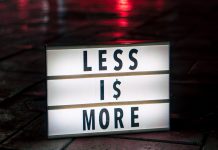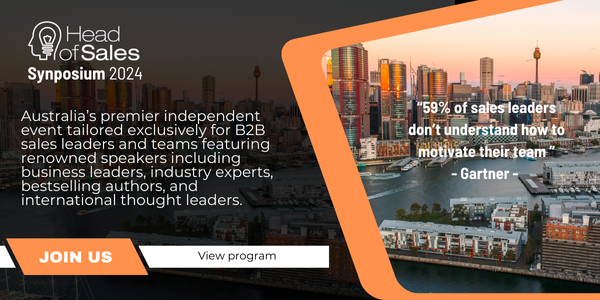Reciprocity, Curiosity And Specificity
A lot of marketers look at successful sales letters and then try to mimic the words they think will boost sales.
That’s right; they use a swipe file. And then they wonder why their swipe-filled sales letter isn’t generating any sales.
Here’s the thing:
If you don’t understand the psychology of selling, then the words are going to fall flat if they’re not used in the right context.
If you put the components of a sales letter in the wrong order, sales will tank.
If you’re not pushing the right psychological triggers at precisely the right time, the conversion rate could be pretty low.
The point is, to start getting more subscribers and sales, you need to understand why your prospects behave the way they do, what they’re thinking, and how you can get them to act in the desired direction.
That’s precisely what you’re about to discover in this report, where we’ll look at ten psychological sales triggers you can put to work for you starting as soon as today.
You can use these mental triggers in your sales letters, blog posts, newsletters and more.
You can use them to get more subscribers, get sales, get referrals, or whatever else you need to grow your business.
Sounds good, right? Let’s jump in.
Sales Trigger 1: Evoke Reciprocity
Reciprocity works like this: if you give your prospects something valuable, they’ll feel obligated to provide you with something in return. This “something” might be a referral, a sale, an email address, or something else of value to you.
The reason this works is that we tend to get psychologically uncomfortable when we feel like we owe someone something.
TIP: This doesn’t work on everyone. Some people have an entitlement mentality, and you could deliver valuable stuff to their door all day long. And yet they’d have no feeling whatsoever that they owe you anything.
On the flip side, you can’t be a conditional giver. In other words, you can’t give with the expectation of receiving something back. So give freely and don’t worry about whether others are giving you anything in return. Help your prospects, even if you aren’t rewarded for it. If nothing else, this will give you a great reputation in your niche (which, in turn, will boost sales).
Let me give you a real-life example:
Let’s imagine you call up a couple of friends and invite them out to dinner tonight. You take them to a lovely restaurant, and everyone enjoys appetisers, a nice meal, and even dessert. When the bill comes, you snatch it off the table and insist on paying. Your friends argue a bit – after all, this was a lovely meal – but eventually, they relent and then graciously thank you for the meal.

So what happens next?
If you guessed that your friends are going to take you out for dinner some night, you’re right. If they didn’t, they’d start to feel psychologically uneasy. Their unease would grow if you did something else nice for them in the meantime, like bought them a cup of coffee or took them out to the movies. They only way they can get rid of this psychological discomfort is by returning the favour.
Listen, your prospects are the same way. If you do nice things for them, they’ll feel a compulsion to return the favour.
So how do you work this into your marketing?
The easiest way to do this is by offering a free lead magnet product, and then sending good content to your mailing list. You can also share good content on your blog and social media platforms. These simple steps will trip the reciprocity trigger.
Take note:
The key to making this work is to remind people of the trigger when you ask them for a favour.
For example: “Since I’ve given you this free video, I’d like you to do a favour for me – click this link to tell your friends about the video. They’re sure to love it just as much as you!”
See how that works? You remind people what you’ve given them, and then you ask for what you want. It’s an “I’ll scratch your back if you scratch mine” sort of concept. And yep, it works like crazy to boost response rates.
Now let’s have a look at the next sales trigger…
Sales Trigger 2: Arouse Curiosity
Curiosity is a powerful motivator. That’s because when you inject it into your content, it’s like creating an itch that your readers need to scratch. And the only way they can scratch this itch is by taking some specific action (such as joining your list or buying a product).
Do you ever remember the original BluBlocker sunglasses and their advertising? Marketing expert Joseph Sugarman eventually took over the marketing for these glasses, and they sold tens of millions of pairs. One thing Sugarman did was create curiosity in the original TV ads.

How?
By showing the reactions of real people as they looked through the sunglasses for the first time. They usually exclaimed, “Wow!” And then they’d go on to talk about how everything looked so amazing, and how they’d never worn sunglasses like this before.
Sugarman admitted that they could have slipped a BluBlocker lens over the camera lens to show the home audience what it’s like to look through those sunglasses. But they didn’t do it, because they wanted to arouse the home audience’s curiosity about what it’s like to look through those glasses.
The only way to scratch that curiosity itch was to order the sunglasses by mail. It worked! The BluBlocker company sold millions of pairs of sunglasses in their first few years.
Now you too can use curiosity. Let me give you a few examples:
Example 1: Use curiosity to make sure people keep reading.
Whether it’s a blog post, email, report or even a sales letter, you can evoke curiosity in the beginning or even the middle to keep people reading until the end.
Let me give you a few specific examples:
- Build anticipation in the introduction. This works well for content such as blog posts, newsletter articles, and reports. Simply tell people what they’re going to learn in the story or article, and arouse curiosity in the process.
For example: You’ll find out what exercise the world’s most élite militaries have used for 500 years to train their best soldiers! - Tell a story, but don’t quite finish it. This arouses emotion, which is a good thing. But if you don’t finish the story right away, it also arouses curiosity.
For example: So you’re probably wondering if Jane met her goal and lost 50 pounds. You know what? I think the results are going to surprise you. I’ll tell you all about them in just a few minutes. But first, let me share with you the #1 mistake dieters make that stalls your progress. - Wet their appetite for what’s coming. You can do this anywhere in a sales letter, article or report.
For example: Jane got amazing fat-loss results using the same secret your favourite Hollywood celebrities use when they need to shed the fat fast.

You’ll discover this secret in just a moment. But first:
Example 2: Make people curious about a product.
Let’s say you’re selling a book about how to get traffic. You might arouse curiosity by saying something like this:
You’ll discover the closely guarded traffic source that’s never been revealed before – wait till you see how much traffic it could bring!
You can bet anyone interested in getting more traffic will be a bit curious about this little-known traffic source.
Here’s another example that would make a great benefit statement in a bulleted list:
You’ll find out which common herb reduces fine lines and wrinkles – you may already have it in your cupboard!
So you can see how this all works. Make people curious, and you’ll keep them hooked on your content, joining your list and buying your product to satisfy their curiosity.
Now the next powerful sales trick:
Sales Trigger 3: Be Specific
People are always a little sceptical when they’re reading bold claims in ads or other content. However, there are ways to cut their scepticism and make them more likely to believe what you’re telling them. One of these ways is by being specific about your claims.

The best way to explain this is with an example. Take a look at these two statements:
Statement 1: You’ll find out how Jorge made $5000 last month with Facebook ads, and how you can too!
Statement 2: You’ll find out how Jorge made $5223 last month with Facebook ads, and how you can too!
Those statements are precisely the same, except for the dollar amount. The first one is an even $5,000, where the second statement is unequivocal.
Guess which statement is more compelling?
If you guessed Statement 2, you’re right. That’s because it’s highly unbelievable that someone made precisely $5000 last month. It’s far more believable that they made $5223. Because the claim is specific, it seems more plausible.
This sales trick doesn’t just work for dollar amounts – it works for almost anything where you can be specific about a number. This includes:
- Length of time. For example, “31 days” is more accurate than “one month.”
- Weight. “Jack lost 63.5 pounds” is more specific and believable than “Jack lost 60 pounds.”
- Other dimensions, such as length and width. “The plants grew 13 inches tall” is more specific and believable than saying they “grew about a foot.”
- Number. For example, “15,955 subscribers” is more specific and believable than “about 16,000 subscribers.”
So you get the point. Whenever you can be specific about a number or any other detail, do so because people are more likely to believe particular claims.
Chapter 2 covers Handle Objections, Credibility and Social Proof.
Chapter 3 covers Fear, Authority, Honesty and Consistency.
Publisher’s note – this article was originally published at Richtopia as A Comprehensive Guide on the Psychology of Marketing and Sales.

































